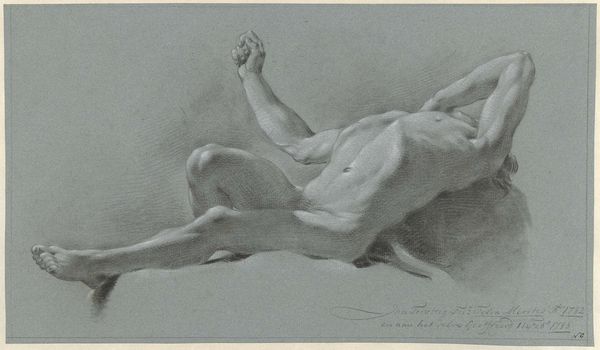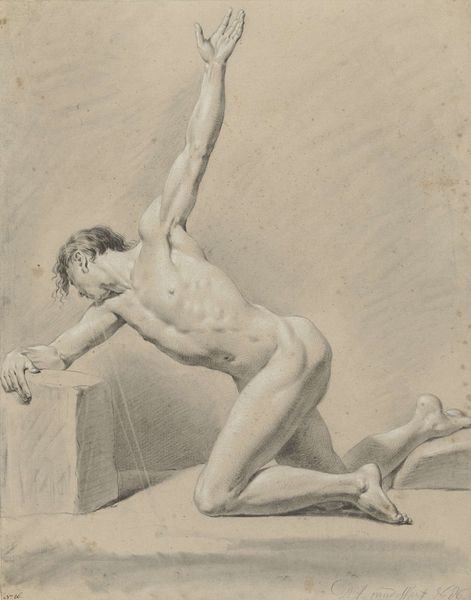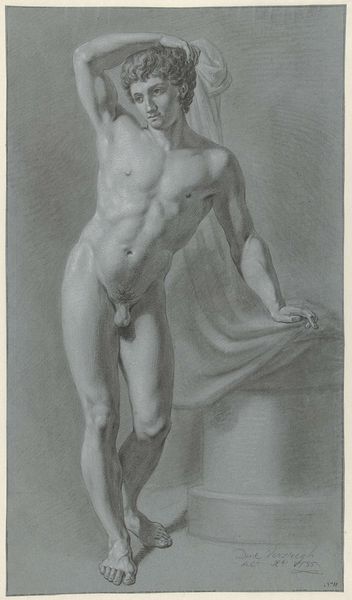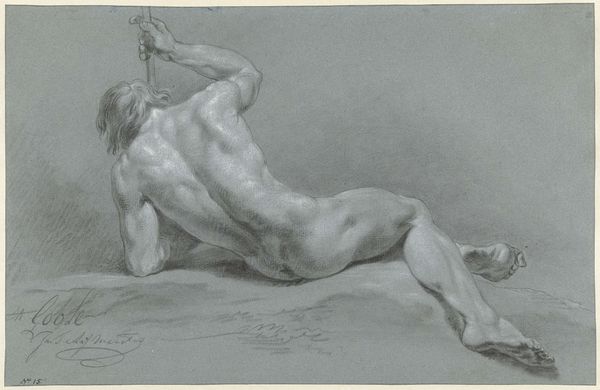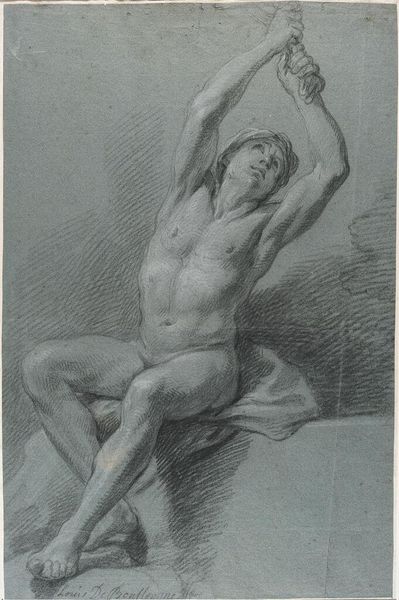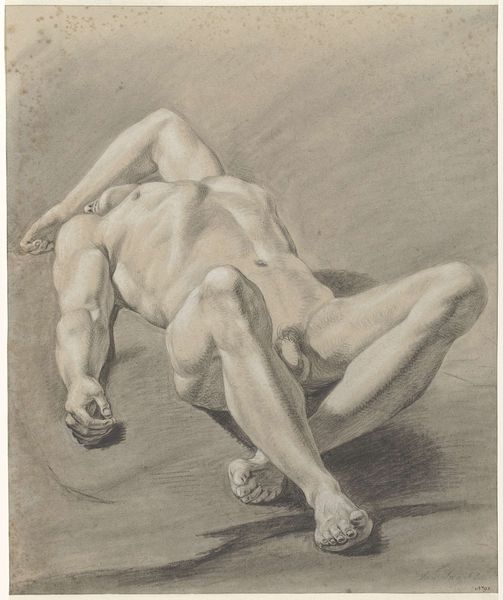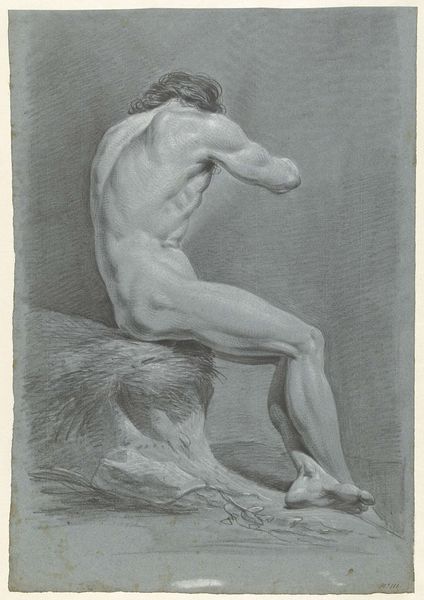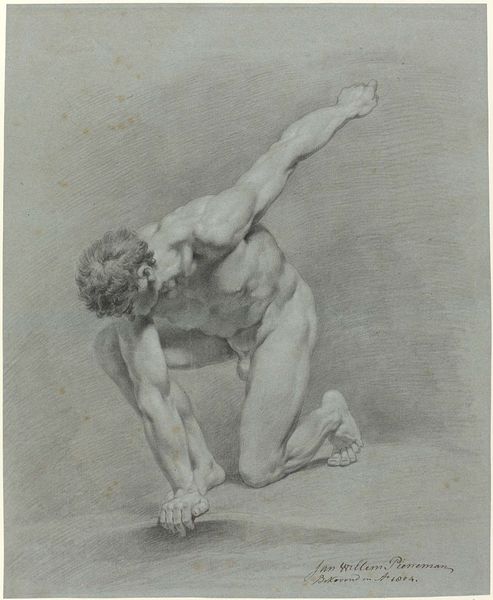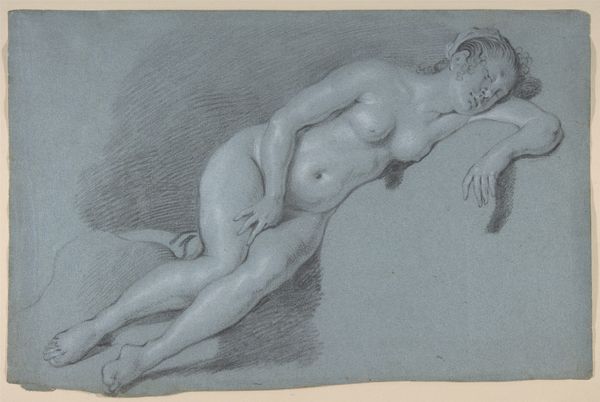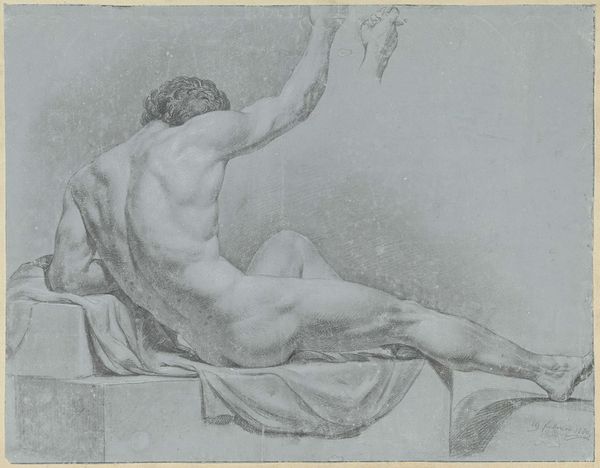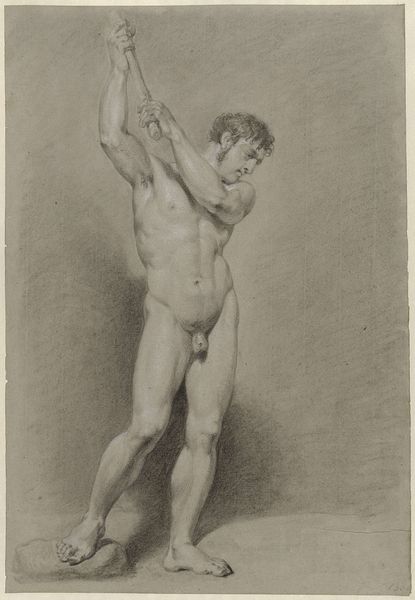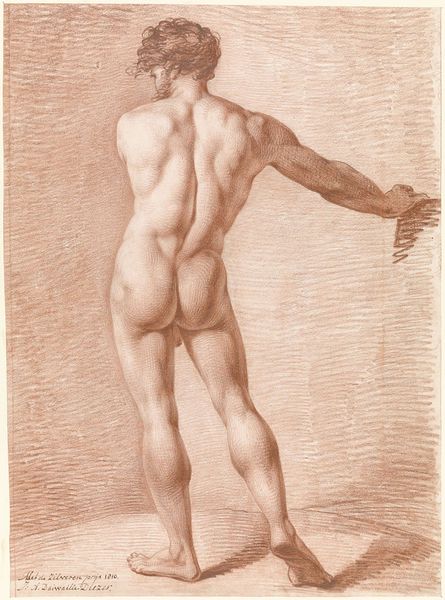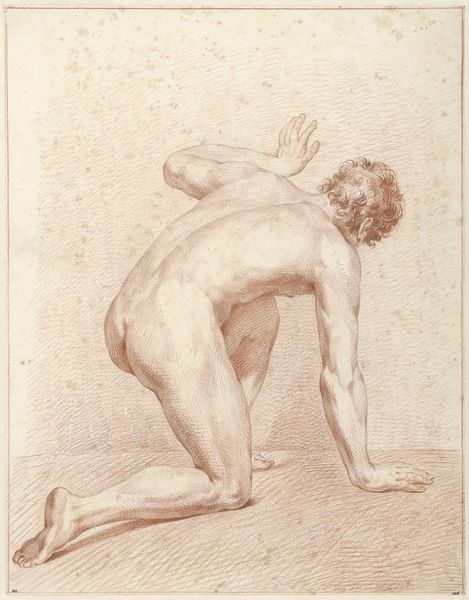
#
facial expression drawing
#
pencil sketch
#
charcoal drawing
#
charcoal art
#
portrait reference
#
pencil drawing
#
animal drawing portrait
#
portrait drawing
#
portrait art
#
fine art portrait
Dimensions: height 327 mm, width 501 mm
Copyright: Rijks Museum: Open Domain
Editor: This drawing, “Liggend mannelijk naakt met geheven arm,” possibly from 1796, is by Derk Anthony van de Wart. It's quite striking. I am immediately drawn to the subject's pose. It seems both relaxed and… well, a little performative, with the raised arm. What stands out to you in this work? Curator: Considering this piece through a materialist lens, I’m particularly interested in the production of this image. The use of charcoal and pencil suggests a direct and immediate process, but let's not forget the socioeconomic factors. Was this drawing intended as academic study, a commercial product, or personal expression? The availability and cost of materials in 1796 Holland, like paper and charcoal, also inform the possibilities available to van de Wart. Editor: That’s interesting. I hadn't considered the price of art supplies back then! So, the type of charcoal used, even the source of the paper, can tell us something? Curator: Absolutely. Analyzing the *means* of production is key. Did van de Wart prepare his own charcoal? Where did he source his paper? These are potentially very skilled manual tasks. Moreover, the subject itself - the male nude – was loaded with academic and social implications. It implies a classical training, but who had access to such training? Editor: So, by examining the materials and techniques, we can unlock ideas about access, labor, and even the social status of both the artist and the sitter, potentially? Curator: Precisely! And by studying its reception – how this image was viewed and used – we can better understand its role in the artistic and cultural landscape of the late 18th century. Think about its circulation; was this meant for a print, influencing even more artists in its form and function? Editor: Wow, I’m seeing this drawing in a completely different light now. It’s not just about aesthetics; it’s about the entire system that made its creation possible. Curator: Exactly. By grounding our interpretation in the material realities of its making, we move beyond subjective appreciation towards a more critical and informed understanding of its significance.
Comments
No comments
Be the first to comment and join the conversation on the ultimate creative platform.
